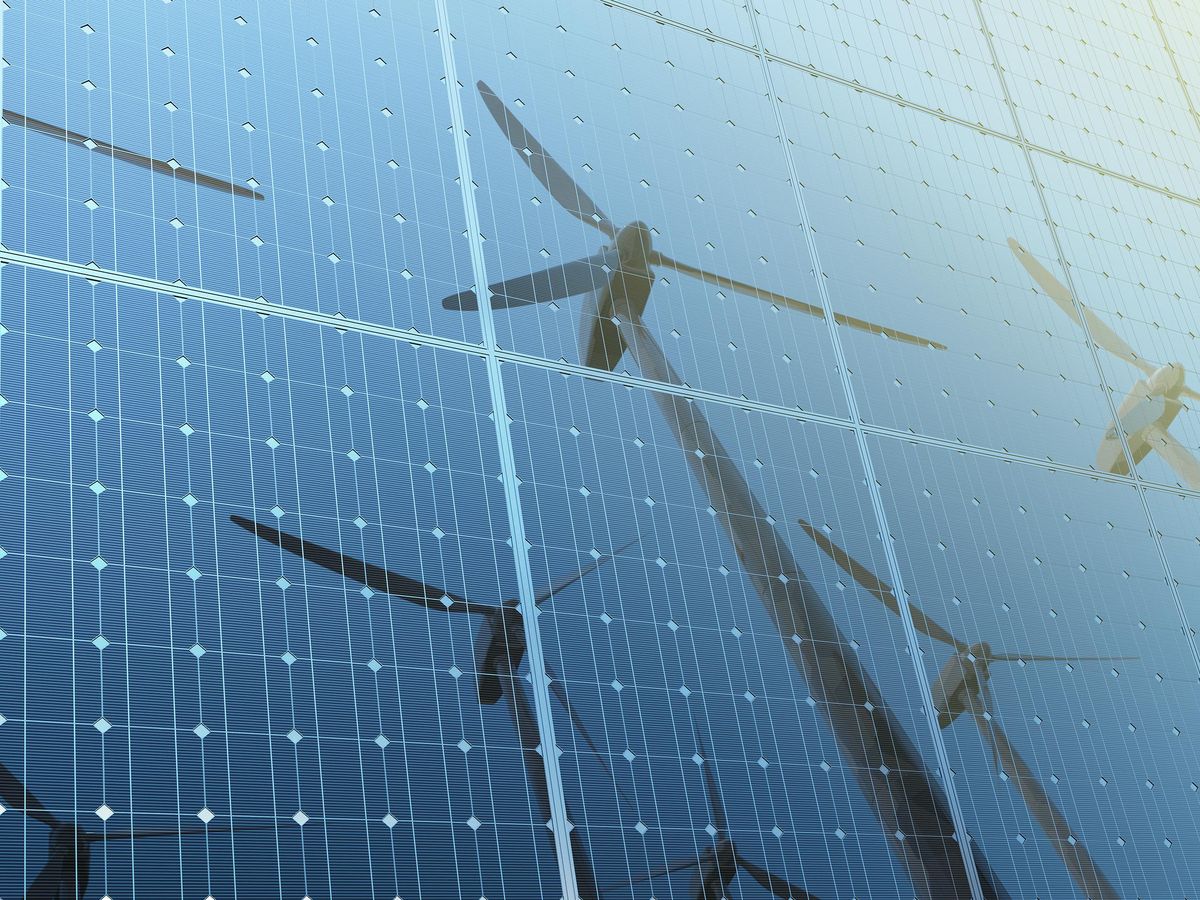Solar and wind power are flourishing, but the world’s transition to renewable electricity remains too slow to meet climate goals. Harnessing the wind and sun on a global scale is easier said than done, for many reasons. One is that wind turbines and solar panels are complex, finicky engineering systems that easily malfunction. Frequent failures drag down power output and make wind and solar farms costly to operate and maintain.
Leveraging artificial intelligence's ability to predict power production and component failures could make renewable electricity more affordable and reliable to speed up widespread adoption, says Joyjit Chatterjee, a data scientist at the University of Hull, in England. Yet it’s not being employed in this field as it is in so many others, such as e-commerce, manufacturing, and health care. “AI could have a real impact on climate change and sustainability,” he says. “But there’s so little work relevant to the renewables domain.”
So Chatterjee and his colleague Nina Dethlefs, director of computer science research at the University of Hull, brought together experts from the AI and renewables community at the recent AI conference International Conference on Learning Representations (ICLR). In an opinion paper published 10 June in the data-science journal Patterns, the duo present key messages from that meeting, outlining the hurdles limiting AI’s impact on renewables, and how to surmount them using established and emerging AI methods.
Wind turbines and solar panels on utility-scale farms are loaded with sensors that allow operators to remotely monitor their power production and health status. These sensors include vibration sensors, temperature sensors, accelerometers, and speed sensors. The data they generate presents an opportunity. AI models trained on historical power production and failure data could predict unexpected failure in a wind turbine gearbox or a solar panel inverter, helping operators prepare for power outages and plan routine maintenance.
Reinforcement learning, an exciting new machine-learning technique, could aid in improving these models, Chatterjee says. In reinforcement learning, algorithms interact with the world during training, getting continual feedback on decisions in terms of a reward or penalty, to learn how to achieve certain goals. That real-world interaction could come from a human.
“One danger of AI is that it’s not perfect,” Chatterjee says. “We can have a human in the loop that can continuously help optimize AI models. There’s often a fear that AI will displace humans and take over decision-making. But humans would need to work with the AI models and together optimize the models for decision support.”
An increased focus on natural-language generation—the process of converting data into human-readable text—would foster trust in AI and increase its use, he adds. Industry engineers are reluctant to use the few fault-prediction models that researchers have created because of a lack of transparency. Providing operators with brief natural-language messages would facilitate interaction.
For the AI community, a big barrier in creating better models is the limited amount of openly available data given the commercially sensitive nature of the wind and solar industry. Besides the industry being unwilling to share data openly, the lack of standards can impair AI model development, Chatterjee says. “Wind farm operators in different parts of world manage data differently so it’s really challenging for researchers to use resources collectively.”
To tackle this problem, the AI community could harness a machine-learning technique called transfer learning. By identifying hidden patterns in various features in the data, this method allows data scientists to transfer knowledge gained from solving one machine-learning task to another, related one, making it easier to train neural networks and develop deep-learning models when data is limited. “This would help you develop a model for turbine Y based on a model for just turbine X and even without historical data,” Chatterjee says.
Neural networks don’t always have to be the answer, though. These deep-learning models have become popular given their traditional suitability for learning from images and text. But the hype created around them has led to them being applied to problems even when it's not necessary, he says. The problem is, neural networks can often fail. Plus, training these large-scale, computationally complex models requires energy-hungry, high-performance computing infrastructure that is inaccessible in developing nations.
For the renewables domain at least, it might sometimes be okay to keep things simple. The AI community should instead focus on using simpler machine-learning models like decision trees first to see if they work. “Often neural networks are not needed for every problem,” says Chatterjee. “Why increase carbon emissions by training and developing more computationally complex neural networks? Future research needs to be on models that are less resource-hungry and carbon-intensive.”
Prachi Patel is a freelance journalist based in Pittsburgh. She writes about energy, biotechnology, materials science, nanotechnology, and computing.



